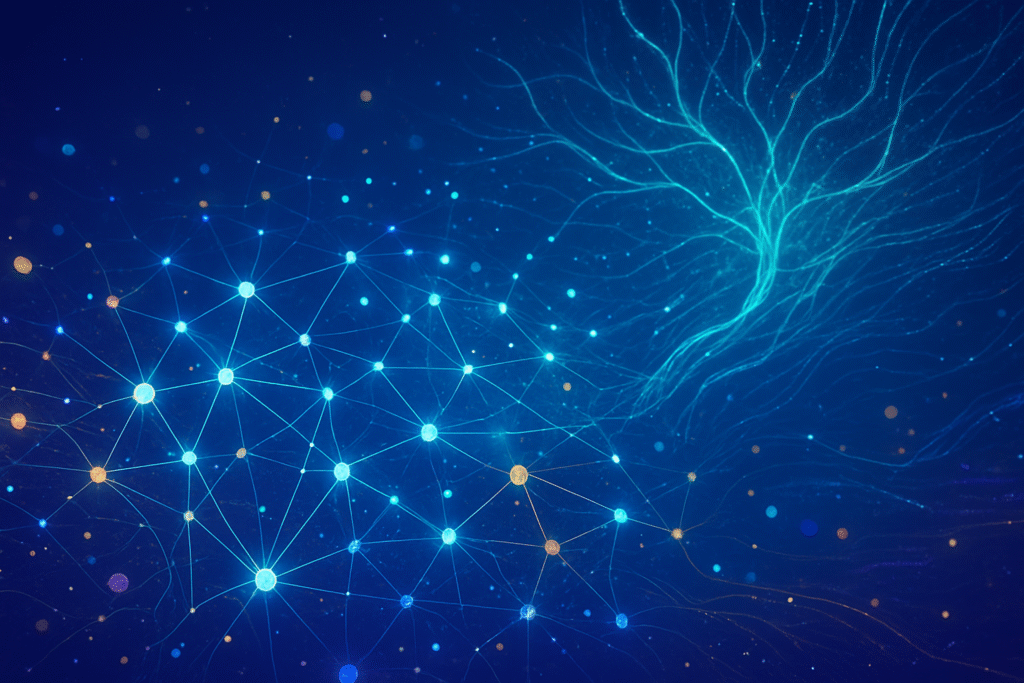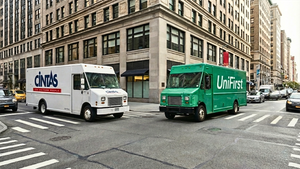
The advertising world is witnessing a seismic shift, with the creator economy's ad spend now poised to dramatically outpace that of the entire traditional media industry. This groundbreaking transformation, significantly accelerated and enabled by Artificial Intelligence (AI), marks a profound reordering of how brands connect with audiences and where marketing dollars are allocated. Projections for 2025 indicate that the U.S. creator economy's ad spend will reach an estimated $37 billion, growing at a rate four times faster than the overall media industry, solidifying its status as an indispensable marketing channel.
This monumental change is driven by evolving consumer behaviors, particularly among younger demographics who increasingly trust authentic, personalized content from online personalities over conventional advertisements. AI's growing integration is not just streamlining workflows but fundamentally altering the creative process, enabling hyper-personalization, and optimizing monetization strategies for creators and brands alike. However, this rapid evolution also brings forth critical discussions around content authenticity, ethical AI use, and the pressing need for standardization in a fragmented ecosystem.
AI's Technical Revolution in Content Creation and Advertising
AI is fundamentally reshaping the technical underpinnings of advertising in the creator economy, moving beyond manual processes to introduce sophisticated capabilities across content generation, personalization, and performance analytics. This shift leverages advanced algorithms and machine learning to achieve unprecedented levels of efficiency and precision.
Generative AI models, including Large Language Models (LLMs) and diffusion models, are at the forefront of content creation. Tools like Jasper and Copy.ai utilize LLMs for generating ad copy, social media captions, and video scripts, employing natural language processing (NLP) to understand context and produce coherent text. For visual content, platforms such as Midjourney and Runway (NASDAQ: RWAY) leverage GANs and deep learning to create realistic images, videos, and animations, allowing creators to rapidly produce diverse visual assets. This drastically reduces the time and resources traditionally required for human ideation, writing, graphic design, and video editing, enabling creators to scale output and focus on strategic direction.
Beyond creation, AI-driven personalization algorithms analyze vast datasets—including user demographics, online behaviors, and purchasing patterns—to build granular individual profiles. This allows for real-time content tailoring, dynamically adjusting ad content and recommendations to individual preferences. Unlike previous broad demographic targeting, AI provides hyper-targeting, reaching specific audience segments with unprecedented precision, leading to enhanced user experience and significantly improved campaign performance. Furthermore, AI-powered performance analytics platforms collect and interpret real-time data across channels, offering predictive insights into consumer behavior and automating campaign optimization. This allows for continuous, data-driven adjustments to strategies, maximizing results and improving ad spend allocation. The emergence of virtual influencers, like Lil Miquela, powered by computer graphics, advanced AI, and 3D modeling, represents another technical leap, offering brands absolute control over messaging and scalable content creation without human constraints. While largely optimistic about efficiency, the AI research community and industry experts express caution regarding the potential loss of human connection and the ethical implications of AI-generated content, advocating for transparency and a human-AI collaborative approach.
Market Dynamics: Winners, Losers, and Strategic Shifts
The AI-driven surge in creator economy ad spend is creating a ripple effect across the technology landscape, delineating clear beneficiaries, intensifying competitive pressures, and disrupting established business models for AI companies, tech giants, and startups.
AI tool developers are undeniably the primary winners. Companies like Jasper, Copy.ai, Writesonic, and Descript, which specialize in generative AI for text, images, video, and audio, are experiencing significant demand as creators and brands seek efficient content production and optimization solutions. Similarly, platforms like Canva (ASX: CAN) and Adobe (NASDAQ: ADBE), with their integrated AI capabilities (e.g., Adobe Sensei), are empowering creators with sophisticated yet accessible tools. Cloud computing providers such as Amazon Web Services (NASDAQ: AMZN), Google Cloud (NASDAQ: GOOGL), and Microsoft Azure (NASDAQ: MSFT) are also benefiting from the increased computational demands of training and running complex AI models.
Tech giants, particularly social media platforms like YouTube (NASDAQ: GOOGL), Instagram (NASDAQ: META), and TikTok (privately held), are deeply embedded in this transformation. They are strategically integrating AI directly into their platforms to enhance creator tools, improve content recommendations, and optimize ad targeting, thereby increasing user engagement and capturing a larger share of ad revenue. Google's (NASDAQ: GOOGL) Gemini AI, for instance, powers YouTube's "Peak Points" feature for optimized ad placement, while Meta (NASDAQ: META) is reportedly developing an "AI Studio" for Instagram creators to generate AI versions of themselves. Major AI labs, including OpenAI (privately held), Google (NASDAQ: GOOGL), and Meta (NASDAQ: META), are locked in an innovation race, with their foundational AI models serving as the crucial infrastructure for the entire AI-driven creator ecosystem. This competition drives rapid advancements but also raises concerns about potential anti-competitive practices from large firms.
For startups, the landscape presents both immense opportunities and formidable challenges. AI democratizes content creation, enabling smaller businesses and independent creators to produce high-quality content with fewer resources, thus leveling the playing field against larger entities. Startups developing specialized AI tools for niche markets or innovative monetization platforms can thrive. However, they face intense competition from tech giants with vast resources and data advantages. The disruption to existing products and services is evident in traditional advertising models, where AI agents and programmatic advertising are reducing the need for traditional media planning. Generative AI also automates tasks traditionally performed by copywriters and designers, leading to potential job displacement in traditional media roles and raising concerns about content authenticity and saturation. Companies that strategically foster human-AI collaboration, focus on ethical AI, and provide robust measurement and standardization solutions will gain a significant market advantage.
Wider Significance: Trust, IP, and the New Digital Frontier
The AI-driven shift in creator economy ad spend holds profound wider significance, aligning with broader AI trends while introducing complex challenges for content quality, labor markets, and consumer trust. This transformation marks a new frontier in digital interaction, drawing comparisons to previous technological milestones.
This shift firmly aligns with the democratization of AI, empowering a wider array of creators, from nano-influencers to established brands, with sophisticated capabilities previously accessible only to large enterprises. AI tools streamline tedious tasks, enhance analytics, and accelerate content production, effectively leveling the playing field and fostering greater creative diversity. However, this also intensifies the focus on ethical AI, demanding transparency, accountability, and robust guidelines to ensure AI augments human creativity rather than replacing it. While 87% of creators report improved content quality with AI and marketers note enhanced campaign results, there's a growing concern about "AI slop"—low-effort, mass-produced content lacking originality. Over-reliance on AI could lead to content homogenization, potentially devaluing unique human artistry.
The impact on labor markets is dual-edged. AI accelerates workflows, automating tasks like video editing, script generation, and graphic design, freeing creators to focus on higher-value strategic work. This can lead to increased efficiency and monetization opportunities. However, it also raises concerns about job displacement for traditional creative roles and increased competition from virtual influencers and AI-generated personas. While 85% of creators are open to digital twins, 62% worry about increased competition, and 59% believe AI contributes to content saturation, potentially making influencing a less viable career for new entrants. Consumer trust is another critical area. Brands fear the loss of human connection, a primary driver for investing in creator marketing. Consumer skepticism towards AI-generated content is evident, with trust decreasing when content is explicitly labeled as AI-made, particularly in sensitive categories. This underscores the urgent need for transparency and maintaining a human-centric approach.
Specific concerns around AI use are escalating. The lack of standardization in the creator marketing ecosystem makes it difficult for marketers to assess creator credibility and campaign success, creating uncertainty in an AI-driven landscape. Intellectual Property (IP) is a major legal battleground, with generative AI tools trained on copyrighted works raising questions about ownership, consent, and fair compensation for original artists. High-profile cases, such as actors speaking out against unauthorized use of their likenesses and voices, highlight the urgency of addressing these IP challenges. Furthermore, the ease of creating deepfakes and misinformation through AI poses significant brand safety risks, including reputational damage and erosion of public trust. Governments and platforms are grappling with regulations requiring transparency and content moderation to combat harmful AI-generated content. This AI-driven transformation is not merely an incremental adjustment but a fundamental re-shaping, akin to or even surpassing the impact of the internet's rise, moving from an era of content scarcity to one of unprecedented abundance and personalized content generation.
The Horizon: Hyper-Personalization, Ethical Frameworks, and Regulatory Scrutiny
The future of AI in the creator economy's ad spend promises an era of unprecedented personalization, sophisticated content creation, and a critical evolution of ethical and regulatory frameworks. This dynamic landscape will continue to redefine the relationship between creators, brands, and consumers.
In the near term, the trend of increased marketer investment in AI-powered creator content will only accelerate, with a significant majority planning to divert more budgets towards generative AI in the coming year. This is driven by the perceived cost-efficiency and superior performance of AI-integrated content. Long-term, AI is poised to become an indispensable tool, optimizing monetization strategies by analyzing viewership patterns, suggesting optimal content types, and identifying suitable partnership channels. We can expect the creator economy to mature further, with creators increasingly viewed as strategic professionals.
On the horizon, hyper-personalized content will become the norm, with AI algorithms providing highly tailored content recommendations and enabling creators to adapt content (e.g., changing backgrounds or tailoring narratives) to individual preferences with ease. Advanced virtual influencers will continue to evolve, with brands investing more in these digital entities—whether entirely new characters or digital replicas of real individuals—to achieve scalable and controlled brand messaging. Critically, the development of robust ethical AI frameworks will be paramount, emphasizing transparency, responsible data practices, and clear disclosures for AI-generated content. AI will continue to enhance content creation and workflow automation, allowing creators to brainstorm ideas, generate copy, and produce multimedia content with greater speed and sophistication, democratizing access to high-quality content production for even niche creators. Predictive analytics will offer deeper insights into audience behavior, engagement, and trends, enabling precise targeting and optimization.
However, significant challenges remain. The lack of universal best practices and protocols for AI necessitates new regulations to address intellectual property, data privacy, and deceptive advertising. Governments, like the EU and China, are already moving to implement requirements for disclosing copyrighted material used in training AI and labeling AI-generated output. Combating misinformation and deepfakes generated by AI will be an ongoing battle, requiring vigilant content moderation and robust brand safety measures. Consumer skepticism towards AI-powered content, particularly concerning authenticity, will demand a concerted effort from brands and creators to build trust through transparency and a continued focus on genuine human connection. Experts predict that AI will become indispensable to the industry within the next two years, fostering robust human-AI collaboration where AI acts as a catalyst for productivity and creative expansion, rather than a replacement for human talent. The key to success will lie in finding the right balance between machine capabilities and human creativity, prioritizing quality, and embracing ethical AI practices.
A New Era of Advertising: Key Takeaways and Future Outlook
The AI-driven revolution in the creator economy's ad spend represents a profound inflection point, not just for marketing but for the broader trajectory of artificial intelligence itself. The rapid shift of billions of dollars from traditional media to creator-led content, amplified by AI, underscores a fundamental recalibration of influence and value in the digital age.
The key takeaways are clear: AI is no longer a futuristic concept but a present-day engine of growth, efficiency, and creative expansion in the creator economy. Marketers are rapidly increasing their investment, recognizing AI's ability to drive cost-efficiency and superior campaign performance. Creators, in turn, are embracing AI to enhance content quality, boost earnings, and drastically cut down production time, shifting their focus towards strategic and emotionally resonant storytelling. While concerns about "AI slop" and maintaining authenticity persist, consumers are showing an openness to AI-enhanced content when it genuinely adds value and diversity. AI tools are transforming every stage of content creation and marketing, from ideation to optimization, making creator marketing a data-driven science.
This development marks a significant chapter in AI history, showcasing its maturity and widespread practical integration across a dynamic industry. It's democratizing content creation, empowering a broader array of voices, and acting as a "force multiplier" for human creativity. The rise of virtual influencers further illustrates AI's capacity to redefine digital personas and brand interaction. The long-term impact points to an exponentially growing creator economy, projected to reach $480 billion by 2027 and $1 trillion by 2032, driven by AI. We will see evolved creative ecosystems where human insight is amplified by sophisticated AI, diversified monetization strategies, and an imperative for robust ethical and regulatory frameworks to ensure transparency and combat misinformation. The creator economy is not just competing with but is on track to surpass the traditional agency sector, fundamentally redefining advertising as we know it.
In the coming weeks and months, watch for continued advancements in generative AI tools, making content creation and automation even more seamless and sophisticated. Innovations in standardization and measurement will be crucial to bring clarity and accountability to this fragmented, yet rapidly expanding, market. Pay close attention to shifts in consumer perception and trust regarding AI-generated content, as the industry navigates the fine line between AI-enhanced creativity that resonates and "AI slop" that alienates, with a focus on intentional and ethical AI use. Brands will deepen their integration of AI into long-term marketing strategies, forging closer partnerships with AI-savvy creators. Finally, keep an eye on early regulatory discussions and proposals concerning AI content disclosure, intellectual property rights, and broader ethical considerations, which will shape the sustainable growth of this transformative sector.
This content is intended for informational purposes only and represents analysis of current AI developments.
TokenRing AI delivers enterprise-grade solutions for multi-agent AI workflow orchestration, AI-powered development tools, and seamless remote collaboration platforms.
For more information, visit https://www.tokenring.ai/.






